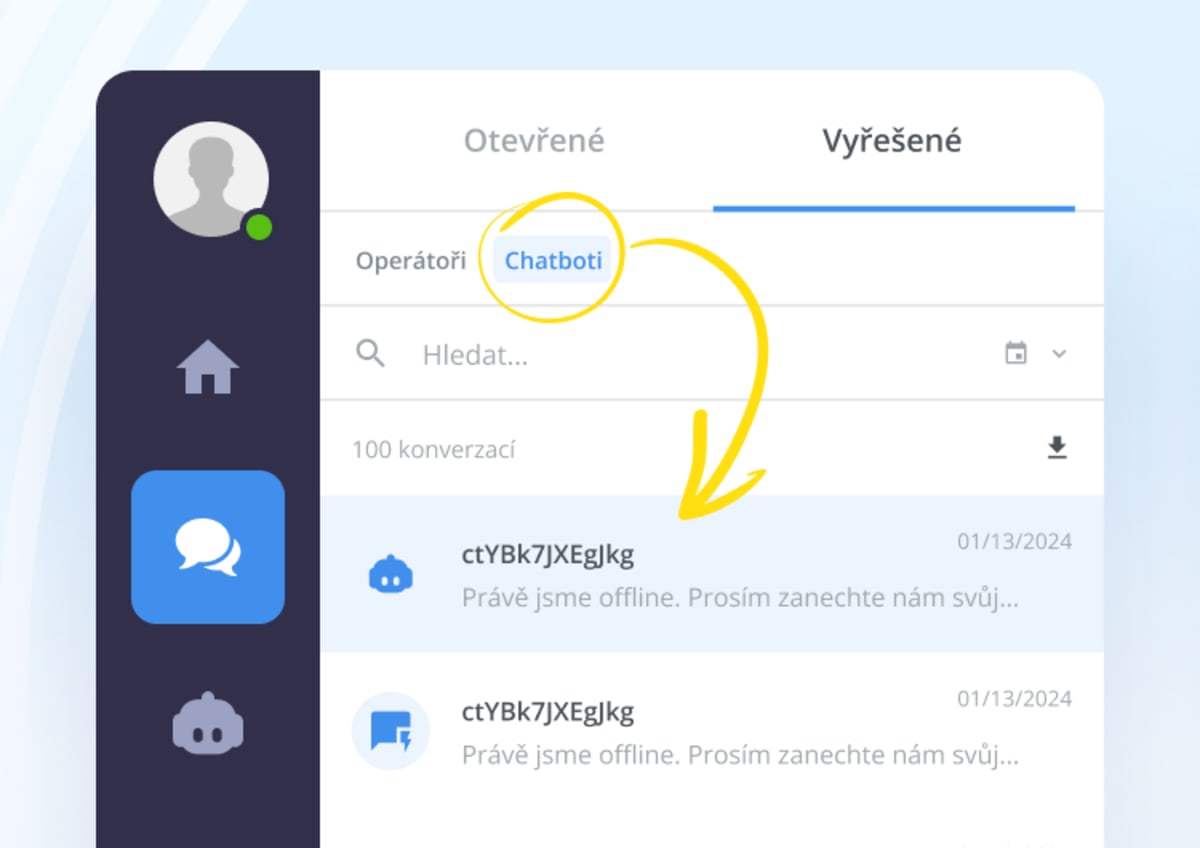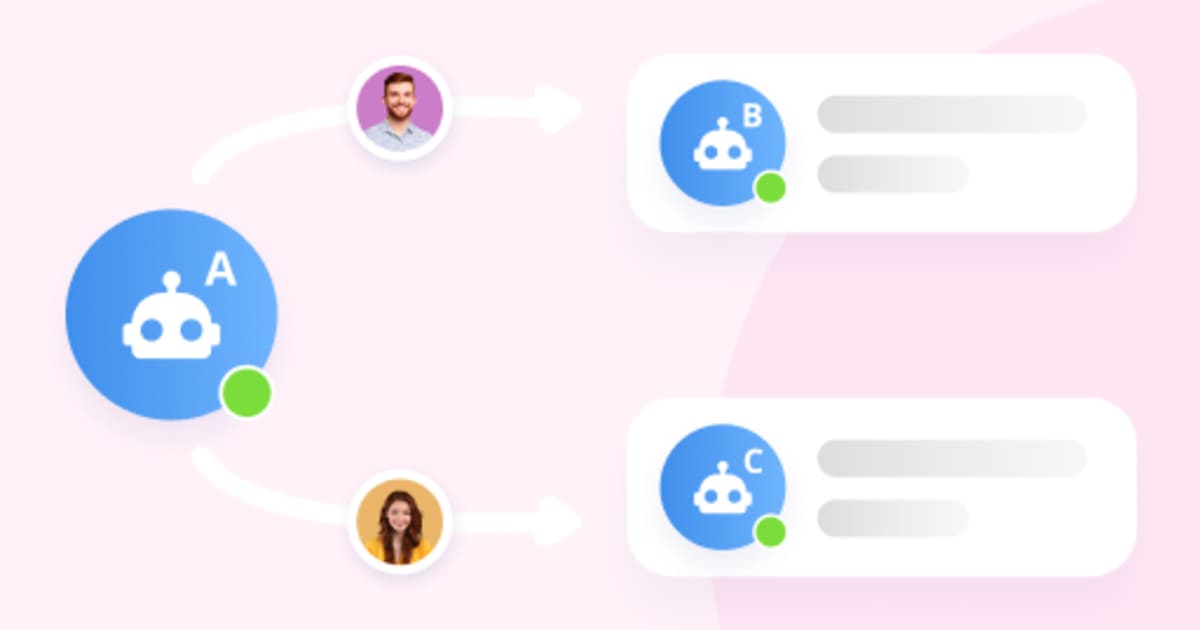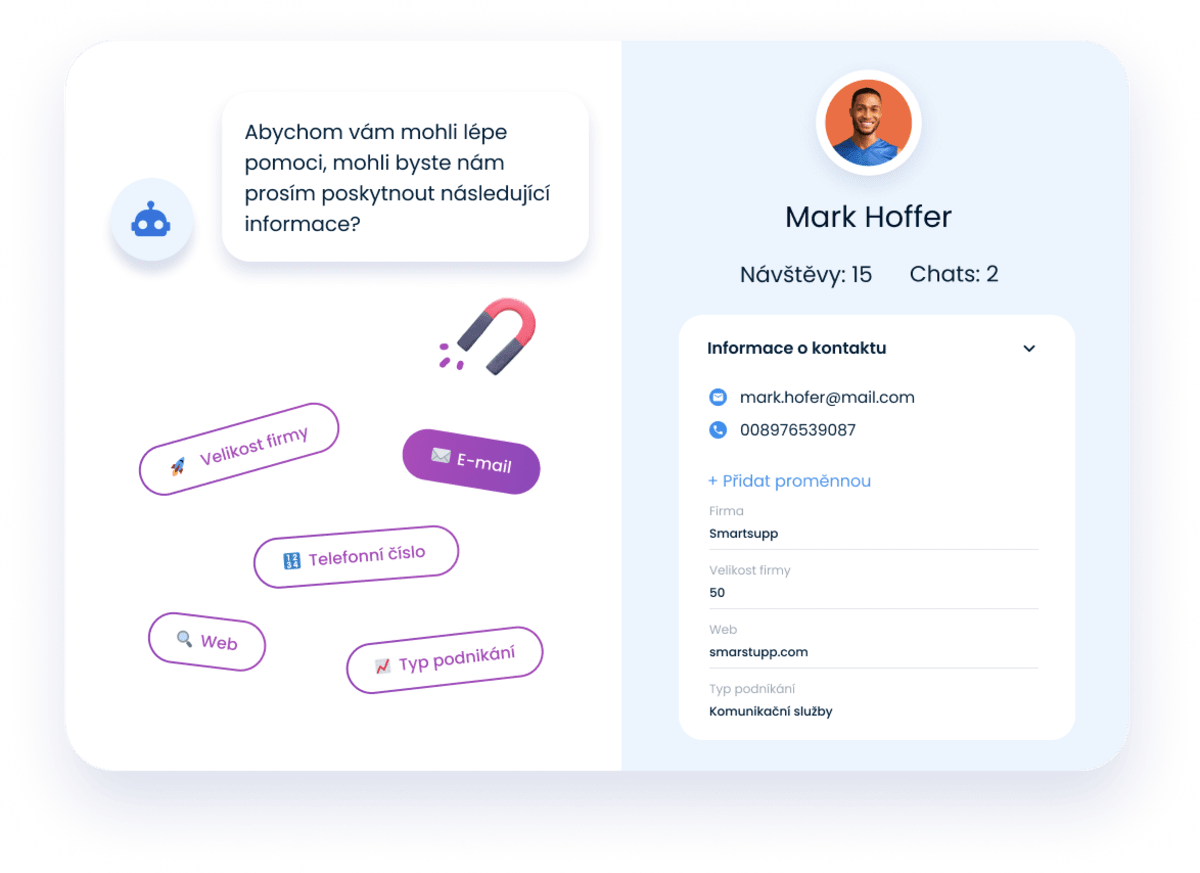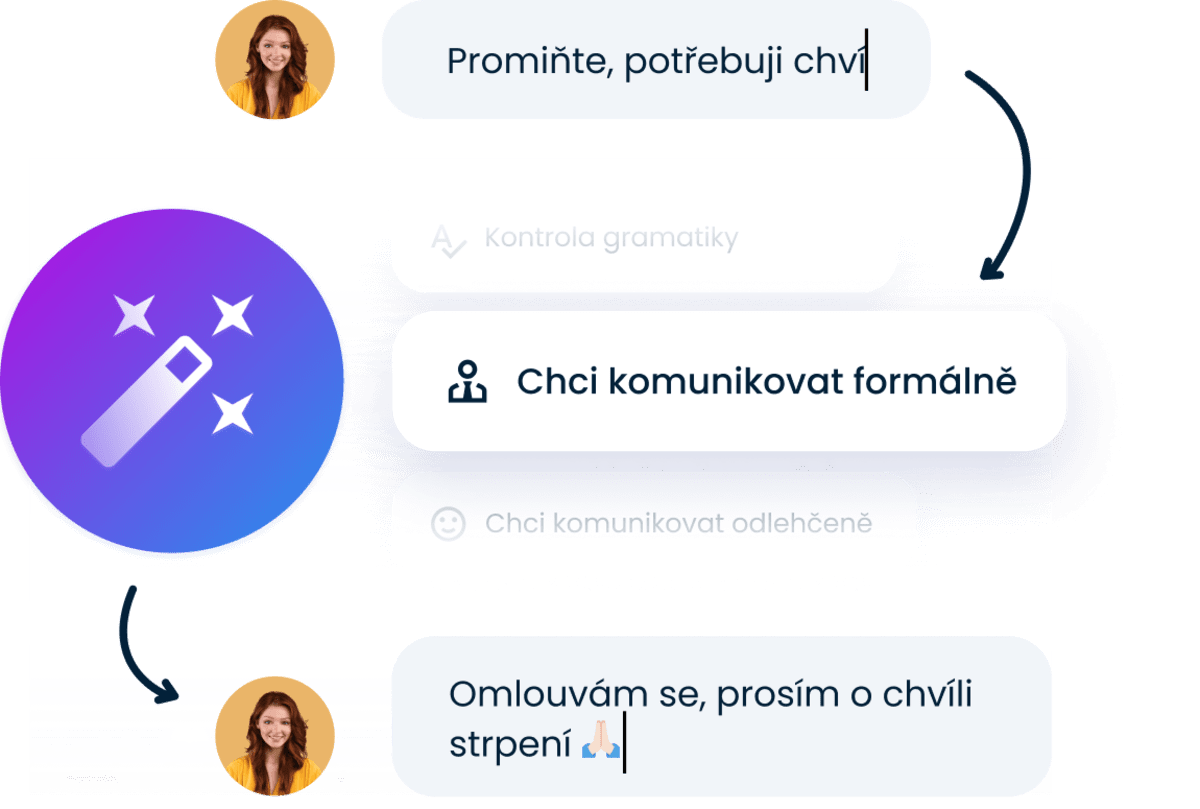Smartsupp novinky
Tady najdete všechny aktuality a produktové novinky Smartsupp.
- Chatbot
Nahlédněte do chatbotích konverzací

Představte si, že byste mohli nahlédnout do všech konverzací mezi návštěvníky a chatbotem. 🕵️♂️
Uvidíte, co je zajímá, co chtějí, a kde se naopak zaseknou. 🧩 A nejen to, zjistíte, kde váš chatbot tápe a co je třeba ještě vylepšit.Jak můžete tyto informace využít?
Můžete chatbota aktualizovat, případně upravit info na webu nebo v materiálech, které rozesíláte. Dejte zákazníkům vše, co potřebují, ještě dříve než o to požádají. 🤝 - Chatbot
Chatbot jako generátor poptávek, který nikdy nespí!

Obohatili jsme chatbota o novou funkci, díky které vám nejen nahradí staré kontaktní formuláře, ale zároveň je i podstatně vylepší. 🔝 Nově i ve Standard balíčku!
Aby podpořil vaše prodeje, 🤖 chatbot sám aktivně osloví návštěvníky, hravým způsobem posbírá klíčové informace a sestaví pro vás seznam nových zakázek.Komu z vás se může hodit?
- Jste realitní makléř a potřebujete zvýšit počet zájemců o bezplatné nacenění nemovitosti
- Zařizujete stylové kuchyně a potřebujete nalákat více zájemců na návrh kuchyně zdarma
- Prodáváte nábytek na míru a chcete zvýšit počet zakázek
💁♀️ TIP: K dispozici je celá paleta chatbotích šablon, z nichž si můžete vybrat tu pravou pro vaše účely.Chcete sbírat poptávky s chatbotem? Stačí kliknout sem.
- Integrace
Propojte si Messenger se Smartsuppem

Messenger integrace je nově i ve Free balíčku!
⚡️ Všechny zprávy bleskově vyřídíte přímo z vašeho Smartsupp dashboardu.
🦘 Odpovídejte pohodlně z jednoho místa bez zbytečného přeskakování mezi aplikacemi.
🛠️ Zároveň máte k dispozici nejrůznější chytré funkce jako jsou chatboti, AI chat asistent nebo kontaktní formulář.Chci si propojit Messenger! Klik sem.
- Mobilní aplikace
Komunikujte se zákazníky přímo ve vaší mobilní aplikaci

Jak pohodlné by bylo, kdyby vám uživatelé mohli psát přímo ve vaší appce. 🤳 Ať už potřebují poradit s výběrem, řešit technický problém nebo jen poslat feedback, vy budete vždy na dosah ruky, připraveni nabídnout rychlou a efektivní pomoc. 🏃♂️💨 Chci zjistit víc
S našim Mobilním SDK je integrace live chatu do vaší aplikace otázkou okamžiku. Zkraťte cestu mezi vámi a vašimi zákazníky doslova na pár kliknutí. S live chatem přímo v aplikaci budete svým zákazníkům blíže než kdykoliv předtím. 💕
Mám zájem o Mobilní SDK 👉 stačí kliknout sem
- Chatbot
Upravte si chatbota lusknutím prstu 🤞

Už žádné dlouhé hodiny strávené tvořením odpovědí a struktury chatbota. Nově můžete duplikovat 🔄 a upravovat celé větve v chatbotovi na jedno kliknutí.
Představte si, že provozujete autosalon a každý den čelíte lavině dotazů na různé modely aut. 🚙🚗 S naší funkcí duplikace je to hračka! Vytvořte základní odpověď pro jeden model a snadno ji zkopírujete pro další. Tímto způsobem poskytnete každému zákazníkovi rychlou, přesnou a na míru šitou odpověď. 🎯👥
Uvolněte své ruce pro další úkoly a soustřeďte se na to, co je opravdu důležité. ⏰🌟
- Chatbot
Vytvořte si tým skvěle spolupracujících chatbotů

Propojte své chatboty mezi sebou a vytvořte nákupní cestu, která se dynamicky mění podle jedinečných potřeb každého zákazníka. Vaši chatboti mohou nově spolupracovat jako perfektně sladěný tým 🤝, kde každý člen přináší své specifické znalosti stejně jako lidé na vaší prodejně.
💡TIP: Představte si, že zákazník vybírá plavky na vašem e-shopu a chatbot ho automaticky nabídne propojení na chatbota, který se specializuje na plážové doplňky 🏖️👒 nebo ho přesměruje na chatbota, který se poskytuje FAQ v rámci finalizací objednávek.
Nyní můžete hladce navigovat své zákazníky mezi různými specializovanými chatboty a poskytnout zákazníkům bezproblémovou cestu k řešení jejich požadavků.
- Chatbot
Nestihli jste včas odpovědět a zákazník už zmizel? 😱

Nevadí. Nově můžete odesílat zprávy, i když už zákazníci nejsou s vámi na chatu.🕐
Vaše odpovědi na ně počkají a doručí se, jakmile se na vaše stránky vrátí. ✅ Zlepšíte tak zákaznickou péči a zvýšíte šance, že svůj nákup dokončí. 🛍️
- Produktové karty
Přetvořte odkazy v atraktivní Produktové karty ✨🎨

S našim vylepšením přeměníte obyčejné textové odkazy v atraktivní Produktové karty ✨, které vaši návštěvníci rozhodně nepřehlédnou. 👀 Kombinujte konverzaci s představením nabídky. Ukažte své nejlepší produkty a sledujte, jak váš konverzní poměr roste. 📈💸
Blížící se vánoční sezóna nabízí ideální příležitost si Produktové karty otestovat. 🎄 Jak? Využijte Produktových karet a ukažte své exkluzivní produkty, slevy a vánoční akce v plné kráse. 🛍️💫

Tři důležité informace:
❗️ Produktové karty se vytvoří automaticky z jakýchkoliv odeslaných URL odkazů - v chatu i v chatbotovi.
❗️V dashboardu se zobrazí jako klasický odkaz. V Produktovou kartu se promění až v chat boxu.
❗️ Název, popisek a náhledový obrázek Produktová karta získává z tzv. OG tagů, více si můžete přečíst v tomto článku.
- Chatbot pro získávání leadů
Získejte více poptávek z webu pomocí chatbota! 🚀

🤖 Chatbot osloví návštěvníky a získá všechny klíčové údaje, abyste jim mohli nabídnout právě to, co je zajímá. 💪
Neomezujte se pouze na e-mail a telefon. 🔍 Sbírejte jakékoliv informace potřebujete - od konkrétních požadavků na službu, přes podrobné kontaktní údaje, až po hledané produkty a oblíbené značky.
S novou funkcí proměnných:
🌐 Dokážete zaujmout a získat nové klienty kdekoliv na webu, i když jste offline.
🧠 Zjistíte více o svých návštěvnících, jejich potřebách a preferencích.
🎯 Segmentujte a oslovujte zákazníky přesně zacílenými zprávami.
🔔 Zapněte si notifikace a žádná nová příležitost už vám neunikne.
💬 Personalizujte svá marketingová sdělení a prodávejte více.
Získejte více informací, sbírejte více poptávek, sjednejte více schůzek, zkrátka vydělejte více peněz z návštěvnosti, kterou už na webu máte! 💰
- AI asistent
Představujeme AI Chat asistenta! ✨

Chcete, aby vaše zprávy působily profesionálně? AI Chat asistent 🤖 vám sestaví perfektní odpověď pro každou situaci.
✍️ Zbavíte se všech pravopisných chyb a překlepů.
🗣️ Přizpůsobíte tón vašich zpráv konkrétním zákazníkům.
📚 Vyladíte obsah zpráv pro lepší srozumitelnost.
AI jednoduše použijete kliknutím na ikonu kouzelné hůlky, kterou najdete v rámci textového pole ve vašich konverzacích.
